Salem's Lingering Shadows: Are the Ghosts of the 1692 Witch Trials Still Crying for Justice?
More than 300 years ago, a town's hysteria led to the execution of 19 innocent people. We're digging into the history and the hauntings to ask a chilling question: did they ever truly leave?
In a town defined by its 17th-century tragedy, you might expect the most intense paranormal claims to come from the oldest, spookiest-looking building. But that’s not the case. One of Salem’s most disturbing and physically violent hauntings is reported in a handsome, three-story brick mansion built in 1784, a place that exudes respectable Federal-era elegance.
The building is now a hotel called The Merchant, but its history is deeply intertwined with the tragedy of 1692. It stands on the very land where High Sheriff George Corwin lived, the man who signed the death warrants and managed the executions. The connection isn’t just geographical; the hotel’s foundation was built using stones from Corwin’s original 17th-century home and jail.
That detail becomes paramount when you learn about the primary paranormal report from inside: the distinct, physical sensation of being choked by an unseen force. For decades, staff, guests, and paranormal investigators have described a sudden, terrifying pressure on their throat, an assault attributed to the ghost of the Sheriff himself.
It’s a brutal and strangely specific claim, but it’s only one thread in a much larger, more complicated tapestry of hauntings that covers the entire town. The stories feature a diverse cast of characters from 1692, each with their own tragic tale and corresponding paranormal account. It begs the question: What is the real legacy of an event like the Salem Witch Trials? Is it something you can only read about in history books, or is it something that can still reach out and grab you?
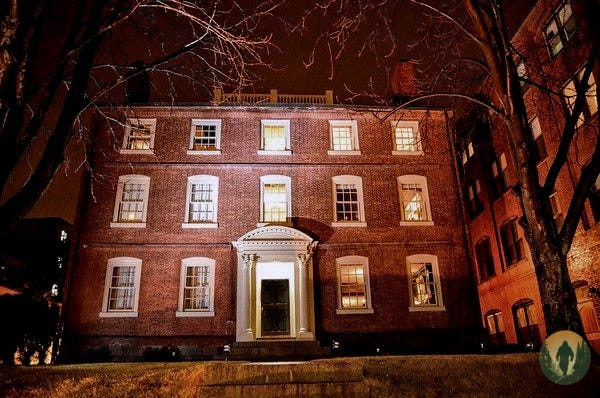
The Anatomy of the Haunting: A Gazetteer of Salem’s Spirits
Sheriff Corwin’s aggressive ghost might be the most famous, but he’s far from the only spirit said to be stalking the streets of Salem. The town’s paranormal roster is a who’s who of the 1692 tragedy. When you start cataloging the reports, you see the stories of the accused and the accusers don’t just echo in history; they form the blueprint for the modern hauntings.
The Vengeful Farmer & His Curse
And there’s no better example of that blueprint in action than the story of Giles Corey. His death was so uniquely brutal, so theatrical in its defiance, that the ghost story it generated is one of Salem’s most specific and enduring.
Corey, an 81-year-old farmer, saw the flaw in the system: conviction for witchcraft meant the state would seize his property, leaving his family destitute. So when he was put on trial, he refused to enter a plea—a rare legal move that halted the proceedings. The court’s response was peine forte et dure, or pressing by stone. Over two days in a field next to the jail, heavy stones were piled on his chest to force a plea, but Corey never broke. His legendary last words were reportedly a roar of “More weight.”
A death like that is bound to create a powerful story.
The lore that grew from this event is twofold. First, there’s the curse he’s said to have uttered against the office of the Sheriff of Essex County. This theory is bolstered by the fact that Sheriff George Corwin himself died of a sudden heart ailment just four years later, and a number of succeeding sheriffs reportedly suffered similar fates or resigned due to ill health. Second, there is the ghost of Corey himself. His apparition is said to appear in the Howard Street Cemetery - the area where he was killed - acting as a spectral harbinger before a major disaster strikes the town. In a fitting act of posthumous revenge, his spirit is also blamed for poltergeist activity at the Joshua Ward House, the home built on his tormentor’s property.
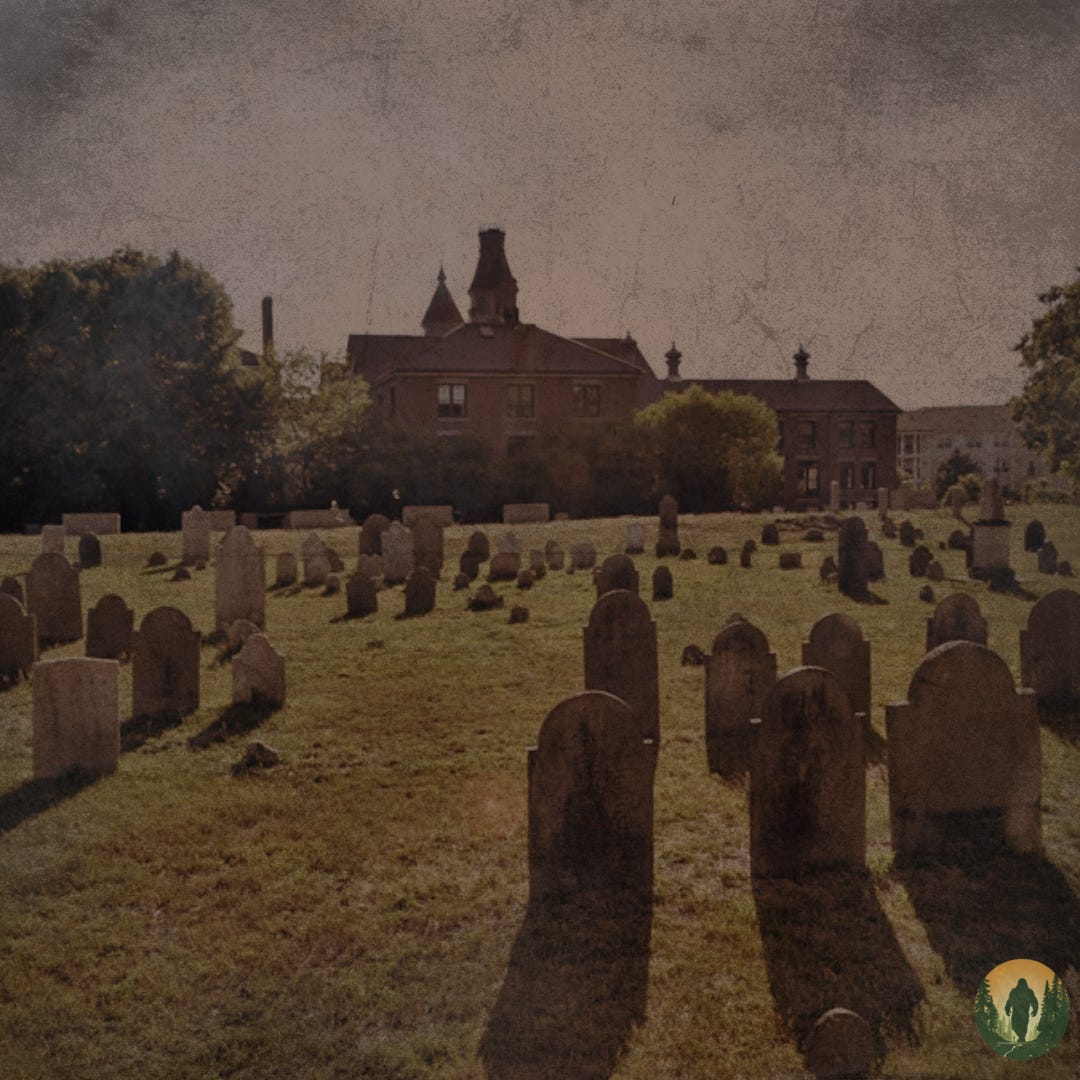
The Tavern Keeper’s Return
While Giles Corey’s haunting is a story of defiant retribution, the paranormal accounts surrounding the first person executed are quieter, stranger, and deeply tied to the life she actually lived. Bridget Bishop was a target long before 1692. She was on her third husband, had inherited property, and ran two taverns. In the rigid, grey world of Puritan Salem, she was a flash of color, famous for her red bodice, public arguments with her husband, and a tolerance for the drinking and shuffleboard that went on late into the night at her establishments. This independent, often confrontational lifestyle made her notorious and, ultimately, the easiest person for the court to convict.
During her trial, the accusations were a bizarre mix of spectral attacks and neighborhood gossip. Men testified that her “specter” visited them at night. A local fabric dyer claimed that the small, oddly shaped pieces of lace she asked him to dye were for making “poppets,” or dolls used in witchcraft. Two men who had done work on her cellar wall told the court they’d found such poppets stuck with pins. An even more incredible story emerged as she was led through town: as Bishop simply looked at the large Puritan meeting house, a board inside reportedly tore itself from the wall—an act immediately credited to a demon doing her bidding. Through it all, Bishop maintained her innocence, stating plainly to the magistrates, “I am innocent to a witch. I know not what a witch is.” It didn’t matter. She was hanged on June 10, 1692.
Today, her reported haunting isn’t a vengeful one. Instead, it seems to be a permanent, residual echo of her life. The most consistent paranormal claims are centered on the location of her former apple orchard, a plot of land now occupied by Turner’s Seafood at Lyceum Hall. Staff and patrons there have reported seeing the apparition of a woman in 17th-century clothing. Still, the most unique and widely reported phenomenon is the phantom scent of fresh apples that inexplicably wafts through the building. It’s a sensory haunting, a strange and specific legacy for the independent tavern keeper who was the first to die.
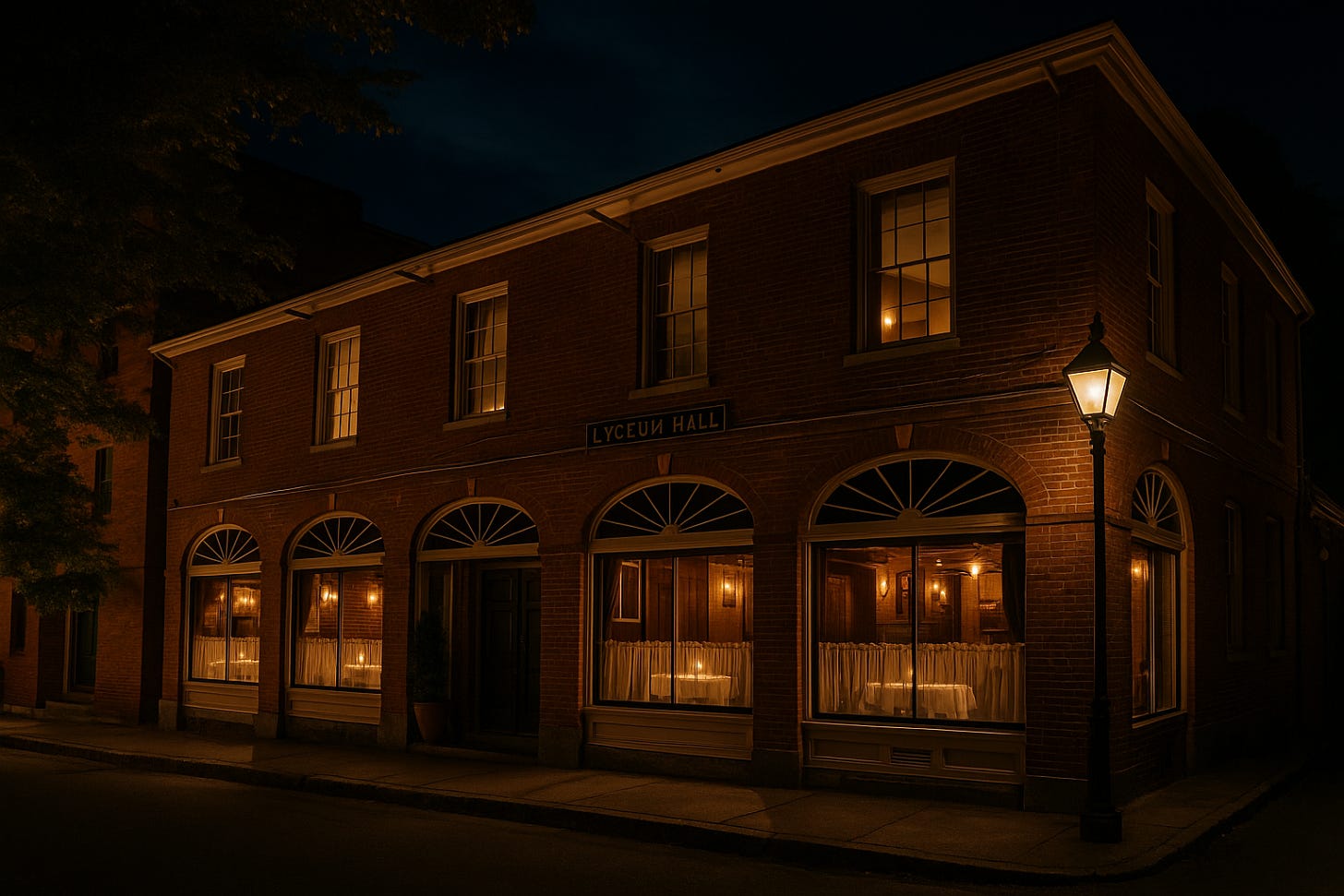
The Cries from the Ledge
While the ghosts of individuals like Giles Corey and Bridget Bishop are tied to their lives and acts of defiance, the haunting of the execution site itself is a story of collective sorrow. For centuries, it was believed that the 19 hanging victims met their end at the summit of Gallows Hill. It wasn’t until 2016 that a team of researchers confirmed the actual location: a stark, rocky outcrop at the hill’s base known as Proctor’s Ledge.
This wasn’t just where they died; it was where they were discarded. As convicted witches, the victims were denied a Christian burial. Their bodies were cut down and left in a shallow, rocky crevice on the ledge. Oral tradition holds that some of the frantic families came under the cover of darkness to secretly retrieve their loved ones for a proper burial on their own property, but not all were recovered.
The paranormal claims at Proctor’s Ledge reflect this history of mass tragedy. The reports here are rarely of a single, identifiable ghost. Instead, people describe an overwhelming sense of residual energy. Visitors and locals report a heavy, oppressive feeling in the air, sudden drops in temperature, and the faint, disembodied sounds of wailing or crying on the wind. The most specific apparition is that of a sorrowful “Lady in White” who is sometimes seen wandering the area before vanishing completely. It’s a place where the haunting feels less like a specific story and more like a permanent scar left on the landscape.
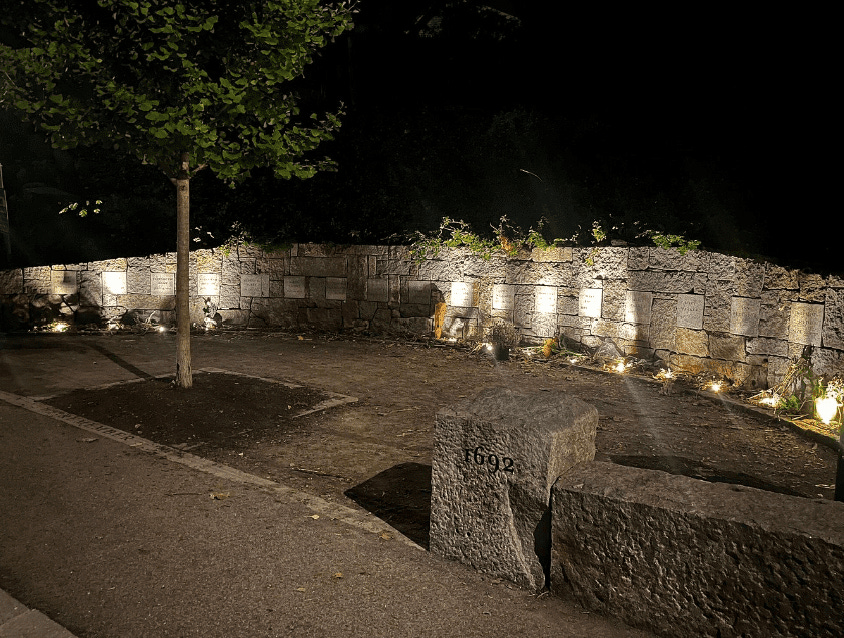
The Judge’s Curse
From the sorrow of the execution site, the paranormal trail leads to the front door of The Witch House, the former home of Judge Jonathan Corwin and the only remaining building in Salem with direct ties to the trials. Judge Corwin was one of the lead magistrates, an unrepentant authority figure at the center of the storm. And while local lore often claims that the accused were interrogated within its dark-paneled walls, the historical record doesn’t support this. The house’s haunted reputation isn’t tied to what happened in the building, but to the man who lived there.
The paranormal reports from The Witch House are pervasive and deeply unsettling. Staff and visitors alike describe a constant, chilling atmosphere and the distinct feeling of being watched or even touched by an unseen presence. Disembodied voices and whispers are said to echo in empty rooms, and some paranormal investigators claim to have captured electronic voice phenomena (EVP) of a child’s voice. Some of the activity is even attributed to the vengeful spirit of Bridget Bishop, still seeking justice from the judge who signed her death warrant.
The stories culminate in the idea of the “Corwin Curse,” a piece of lore suggesting that the family’s subsequent misfortunes were a form of supernatural blowback for the judge’s refusal to ever show remorse for his role in the tragedy. It seems that in Salem, the ghosts of the victims aren’t the only ones who are restless.

The Genesis of the Ghost Story: How History Became a Haunting
The paranormal accounts from Salem are detailed and compelling, but their current form presents a fascinating puzzle. If you search through the historical records of the 1700s, you’ll find a great deal about legal repentance and the social shame of the trials, but very little that matches the ghost stories told today. This suggests that while people may have had unexplained experiences, the specific narratives used to interpret them have changed dramatically over time. Modern ghost lore appears to have taken shape through three distinct cultural shifts: a shift in paranormal theory, the influence of a famous author, and the emergence of a unique local industry.
From “Specter” to Spirit
The first significant shift is in the very definition of a ghost. During the 1692 trials, the only “spirits” discussed were “specters.” In the Puritan worldview, a specter wasn’t the soul of a dead person but an apparition of a living person, which the Devil could use as an instrument to torment others. The court’s acceptance of “spectral evidence” - testimony that a living person’s specter was causing harm - was central to the crisis.
The ghost stories told today are based on a completely different model. The spirits are understood to be the restless souls of the innocent victims, acting with their own agency. This represents a fundamental shift in how paranormal encounters are identified and understood. An apparition seen in 1700 would be interpreted through the lens of witchcraft; a similar sighting today would be interpreted as a haunting.
The Hawthorne Effect
A new narrative framework began to emerge in the 19th century, most powerfully through the work of author Nathaniel Hawthorne. As a direct descendant of the unrepentant Judge John Hathorne, Hawthorne was deeply connected to the legacy of the Salem Witch Trials. His fiction, particularly The House of Seven Gables, explored the history of Salem through a Gothic lens, introducing powerful themes of inherited curses, ancestral guilt, and supernatural consequences that could linger for generations. In doing so, he provided a new, compelling literary language for framing the events of 1692 not just as a historical tragedy, but as a source of enduring paranormal phenomena.
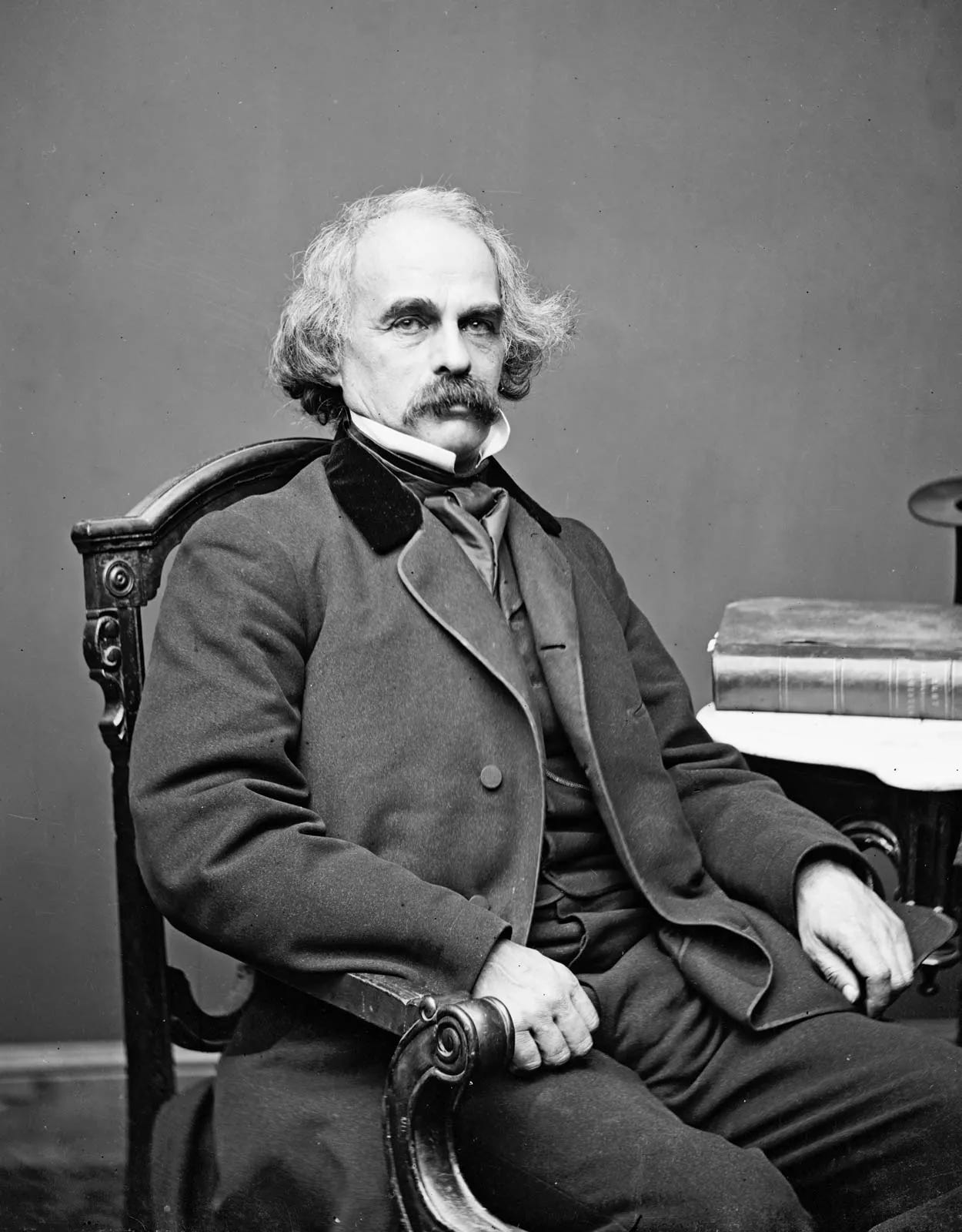
Spiritualism & “Witch City”
Around the same time Hawthorne was writing, the American Spiritualist movement swept the nation, popularizing the idea that direct communication with the spirits of the dead was possible through mediums. With a strong following in Massachusetts, Spiritualism offered a cultural framework that allowed the victims of 1692 to be seen in a new light: as active spirits who might wish to communicate their stories of injustice.
This cultural shift set the stage for the final evolution. As tourism in Salem grew in the late 19th and 20th centuries, these narratives were codified. The establishment of museums and the hugely popular “Haunted Happenings” festival created an industry around the city’s dark history. Today, ghost tours are the primary way these stories are shared, providing a powerful and standardized narrative that shapes how countless visitors interpret their own unsettling or unexplained experiences in the historic town.
The History Behind the Haunting: The Perfect Storm of 1692
To understand the tragedy of the Salem Witch Trials, you have to understand the world that created it, and that world was terrifying long before anyone cried “witch.” The crisis wasn’t born from a single event but from a perfect storm of social and religious pressures that had been building for years, creating a powder keg of fear that was waiting for a spark.
A World of Fear
For the Puritans of the Massachusetts Bay Colony, the Devil wasn’t an abstract concept; he was a real, active entity constantly trying to tear down their “city on a hill.” This belief, supported by the writings of influential ministers like Cotton Mather, meant that real-world misfortunes —such as a failed crop or a sudden illness—were often interpreted as acts of diabolical interference.
Very real threats amplified this spiritual anxiety. The colony was reeling from the brutal King William’s War, which had ravaged frontier settlements and sent a flood of traumatized refugees into Essex County, straining resources and heightening fears of attack. This was compounded by a recent smallpox epidemic and deep political uncertainty following the revocation of their colonial charter, leaving them in a state of legal limbo. It was a society under immense stress, primed for a scapegoat.
Village vs. Town
On top of all that, the community was fighting with itself. There was a deep-seated resentment between the residents of rural, agrarian Salem Village (present-day Danvers) and the increasingly wealthy, mercantile families of Salem Town. The Village was more traditional and felt that the secular, commercial interests of the Town were threatening its farming-based, religious way of life. As historians Paul Boyer and Stephen Nissenbaum famously showed, the accusations in 1692 followed these pre-existing “factional fault lines” with uncanny precision. The witchcraft accusations became a way for one side of a divided community to lash out at the other.
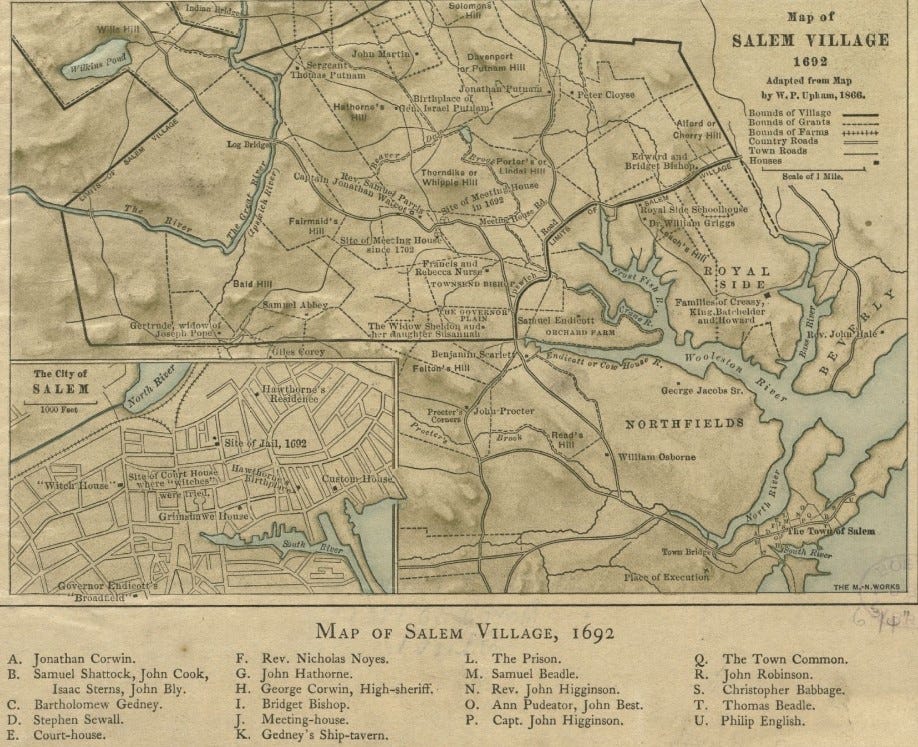
The Fatal Flaw
This volatile mix of fear and social strife was finally ignited by a disastrous legal decision. With the colony’s charter in limbo, the newly arrived governor, Sir William Phips, created a special, temporary court to handle the crisis: The Court of Oyer and Terminer (“to hear and to determine”). This court made a fatal error: it chose to accept “spectral evidence.”
As we discussed, this was the testimony of the afflicted girls that the apparitions of their accused neighbors were tormenting them. Because this evidence was, by its very nature, invisible to everyone but the accuser, it was impossible to verify or refute. It effectively stripped the accused of any meaningful defense. It allowed the accusations to spiral out of control, leading to the execution of 19 innocent people and the deaths of at least five more in the horrific conditions of the jails.
Modern Encounters: The 21st-Century Evidence
The stories of Salem’s ghosts didn’t end with Hawthorne and the Spiritualists. They’ve found new life in the 21st century, shifting from folklore and literature to digital photographs, audio recordings, and the case files of modern paranormal investigators. The methods of documentation have changed, but the core experiences remain startlingly consistent.
The Investigator’s Evidence
In recent decades, numerous paranormal research groups have brought their equipment to Salem, and their findings have become a key part of the modern lore. The team from Ghost Hunters (TAPS) has conducted multiple investigations at the Joshua Ward House, focusing on the malevolent phenomena attributed to Sheriff Corwin. During their time in the house, multiple team members reported feeling the infamous choking sensation, with one investigator describing a terrifying pressure that built on his throat until he was forced to leave the room. Beyond personal experiences, they also captured what they identified as compelling electronic voice phenomena (EVP), including a disembodied voice that seemed to clearly say, “I am not a witch,” and another that stated, “guilty.”
Other locations have yielded similarly specific claims. The New England Society for Psychic Research (NESPR) released a case file on their investigation into The Witch House, home of Judge Corwin. Their report details not just vague feelings of unease, but specific, documented phenomena. Their audio recorders captured what they believe is the EVP of a child’s voice in an upstairs room, a claim that resonates with stories of the Corwin children. These modern investigative reports, with their focus on tangible data like audio recordings and temperature fluctuations, add a new layer to the lore, moving it from historical legend to a subject of active, ongoing inquiry.
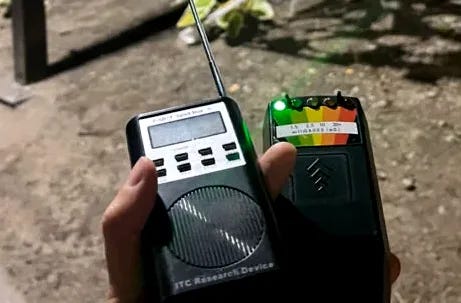
The Visitor’s Testimony
Beyond the professional ghost hunters are the countless personal experiences reported by ordinary people, which have become supercharged in the age of the internet. One of the most famous pieces of modern evidence came not from an investigator, but from a visitor to the Joshua Ward House in the 1980s. While taking a Polaroid photo of a decorative mirror, she captured the now-infamous image of an unidentified female figure with wild, dark hair and 17th-century attire standing in the room behind her. The photo, unexplainable to this day, is often cited as evidence of a “witch” spirit, one of Corwin’s victims, also haunting the property.
This kind of anecdotal evidence is powerful because of its consistency, often coming from people unaware of the specific folklore. At Turner’s Seafood, new employees who haven’t been told the story of Bridget Bishop will ask their managers why they sometimes smell fresh apples in the dining room when there are none in the kitchen. Tourists on ghost tours will capture photos of strange mists or orbs of light in the Old Burying Point Cemetery, particularly near the grave of the unrepentant Judge Hawthorne. While none of these individual accounts is definitive proof, it’s the sheer volume and the persistent, uncanny patterns of the reports—echoing the specific details of the original historical tragedies—that keep the questions of Salem’s haunting compellingly open.
Investigating the Mundane: Is There a Ghost in the Machine?
The sheer volume of consistent, detailed reports from Salem is compelling. But a thorough investigation requires us to ask a tricky question: could something else be going on? It’s easy to get swept up in the stories, but there are a few grounded, non-paranormal hypotheses that are tailored to Salem’s unique environment and deserve a serious look.
Hypothesis 1: The Priming Power of “Witch City”
Salem in October is an overwhelming sensory experience, with a significant portion of its economy built around a single, powerful narrative: this town is haunted. This creates a massive psychological “priming” effect. When a ghost tour leads a group of 30 people into the Joshua Ward House and tells them that this is the very room where people feel as if they’re being choked, the power of suggestion is incredibly strong. A person might naturally clear their throat, feel a slight tightness from anxiety, or have their collar brush their neck, and their brain - already primed by the spooky story - interprets that ambiguous physical sensation as a paranormal touch. This isn’t to say the feeling isn’t real; it absolutely is. The question is whether the cause is an external spirit or the internal power of suggestion.
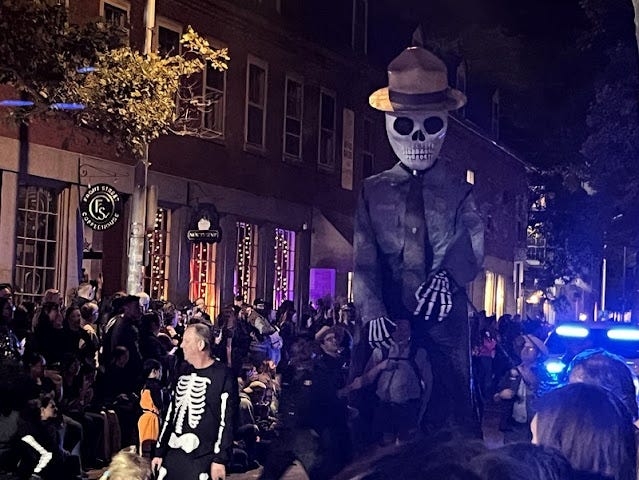
Hypothesis 2: Old Building Syndrome & High Strangeness
Many of Salem’s most haunted locations are, unsurprisingly, very old buildings. And old buildings play tricks on our senses. They are known for having drafts and natural convection currents that can cause sudden, dramatic temperature drops, easily interpreted as the classic “cold spot.” Old, sometimes faulty wiring can create high and fluctuating electromagnetic fields (EMFs). Some studies suggest that prolonged exposure to certain EMFs can induce feelings of paranoia, unease, and even hallucinations in sensitive individuals.
Furthermore, there’s the phenomenon of infrasound, sound frequencies below the range of human hearing (below 20Hz) that can be generated by wind hitting a building, old pipes, or even distant traffic. Studies have shown that exposure to infrasound can cause feelings of anxiety, dread, chills, and a distinct sense of an unseen “presence.” Could the oppressive sadness at Proctor’s Ledge or the feeling of being watched in The Witch House be a reaction to an environmental factor our eyes can’t see and our ears can’t hear?
While these explanations are plausible for many of the feelings people report, they struggle to account for the highly specific and consistent phenomena that occur. Can a draft explain the distinct scent of apples? Can infrasound make a clear, disembodied voice appear on a digital recorder? These mundane explanations can cover a lot of ground, but there are still details from the case files that remain stubbornly strange.
The Enduring Shadow
It’s impossible to dismiss the plausible, mundane explanations for what happens in Salem. The power of suggestion in a town built on ghost tourism is immense, and old buildings have a way of playing tricks on our senses. And yet, it’s also impossible for those explanations to neatly account for everything. They struggle to address the sheer specificity of the claims: the phantom scent of apples tied to an orchard-owning victim, the choking sensations reported in the home of the executioner, or a curse that seemed to echo for centuries.
These stubborn, repeating patterns are where the true mystery lies. Ultimately, whether the spirits of Salem are actual discarnate souls or powerful echoes of trauma imprinted on the landscape, their presence serves as an eternal, unsettling monument. They’re a living memorial, forcing us to remember not just the 20 people who died, but the terrifyingly human capacity for hysteria and injustice. This ghost can haunt any time, in any century.
References
Adventurous Kate. (2025). 25 historic, spooky things to do in Salem, Massachusetts.
Baker, E. W. (2015). A storm of witchcraft: The Salem trials and the American experience. Oxford University Press.
Baltrusaitis, S. (2024). The ghosts of the Salem witch trials. Hideous Destinations: A Guide to the World's Scariest Places.
Bell, R. (2020). The ‘haunted’ village: The rise and fall and rise of Salem’s reputation. The New England Quarterly, 93(3), 333–368.
Boyer, P., & Nissenbaum, S. (1974). Salem possessed: The social origins of witchcraft. Harvard University Press.
Brattle, T. (1692). Letter of Thomas Brattle, F.R.S, 1692. In G. L. Burr (Ed.), Narratives of the witchcraft cases, 1648-1706. Charles Scribner's Sons.
Brooks, R. B. (2025). Salem witch trials primary sources. History of Massachusetts Blog.
Brooks, R. B. (2025). Where were the Salem witches buried?. History of Massachusetts Blog.
Brown, K. M. (2022). Possessed by the Salem witch trials. Penn Today.
Caporael, L. R. (1976). Ergotism: The Satan loosed in Salem? Science, 192(4234), 21–26.
Christ, R. (n.d.). Path from jail to execution. Salem Witch Museum.
Christ, R. (n.d.). Salem Witch Trials Memorial. Salem Witch Museum.
Christ, R. (n.d.). Site of George Corwin House / Joshua Ward House. Salem Witch Museum.
City of Salem. (n.d.). Historical profile.
Commonwealth of Massachusetts. (2014). Salem witch trials: Original court records. Mass.gov.
D'Costa, K. (2017, October). The psychology of believing in ghosts. Scientific American.
Ghost City Tours. (n.d.). Gallows Hill.
Ghost City Tours. (n.d.). Haunted places in Salem.
Ghost City Tours. (n.d.). The Joshua Ward House.
Gosse, E. (2024). Could a fungus be behind the Salem witch trials? Purdue University Agriculture.
Gould, A. (2020). 10 haunted places in Salem, Massachusetts. Tatted Nomad.
Hall, D. D. (Ed.). (2005). Witch-hunting in seventeenth-century New England: A documentary history, 1638-1692. Northeastern University Press.
Hawes, J., & Wilson, G. (2014). The Salem witch trials. In Seeking spirits: The lost cases of the Atlantic Paranormal Society. Gallery Books.
Higginbotham, A. (2011, October). The ghosts of Salem: The TAPS investigation. Popular Mechanics.
History.com Editors. (2023). Salem witch trials. HISTORY.
Howlett, D. T. (2024). Historian: The Salem witch trials are personal. George Mason University.
Karson, A. (n.d.). Revenge in the Salem witchcraft hysteria: The Putnam family and George Burroughs. Loyola University New Orleans.
Linder, D. O. (2021). The Salem witchcraft trials of 1692. Famous Trials.
Locations of Lore. (2023). Execution site of the Salem witch trials.
MacGinitie, M. (2020). Ghost sighting and ghost stories in Salem. Beyond the Miles Travel Blog.
Matossian, M. K. (1982). Ergot and the Salem witchcraft affair. American Scientist, 70(4), 355-357.
McKenna, K. (2023). How Salem turned the witch trials into a ghoulish tourism juggernaut. The Ringer.
New England Historical Society. (n.d.). The curse of Giles Corey.
New England Society for Psychic Research. (2022). Case files: The Witch House.
Newman, C. (2016). With UVA's help, Salem finally discovers where its 'witches' were executed. UVA Today.
Nightly Spirits. (n.d.). The Joshua Ward House in Salem.
Nightly Spirits. (n.d.). The Witch House in Salem.
Norton, M. B. (2002). In the Devil's snare: The Salem witchcraft crisis of 1692. Alfred A. Knopf.
O'Brien, T. (Producer). (2007). The strangler in the attic [TV series episode]. In Ghost Hunters. SyFy.
Peabody Essex Museum. (n.d.). The Salem witch trials of 1692.
Purdy, E. R. (2023). Salem witch trials. In D. L. Hudson Jr. (Ed.), The First Amendment Encyclopedia. Middle Tennessee State University.
Radford, B. (2021, October). The Salem witch trials: A perfect storm of superstition and hysteria. Live Science.
Ray, B. (Ed.). (n.d.). Salem witch trials documentary archive and transcription project. University of Virginia.
Roach, M. K. (2002). The Salem witch trials: A day-by-day chronicle of a community under siege. Taylor Trade Publishing.
Salem Ghosts. (n.d.). Proctor's Ledge.
Salem Ghosts. (n.d.). The Joshua Ward House.
Salem Ghosts. (n.d.). Turner's Seafood at Lyceum Hall.
Salem Haunted Happenings. (n.d.). Remembering 1692 at the Salem witch trials memorial & Proctor's ledge.
Scotti, R. A. (2024). Salem's ghosts: The haunting of the witch trials.
Sewall, S. (1973). The diary of Samuel Sewall, 1674-1729. M. H. Thomas (Ed.). Farrar, Straus and Giroux.
Sledzik, P. S., & Bellantoni, N. (1994). Bioarcheological and biocultural evidence for the New England vampire folk belief. American Journal of Physical Anthropology, 94(2), 269–274.
Smale, M. (2022). The shadow over Salem. Medium.
Spanos, N. P., & Gottlieb, J. (1979). Ergotism and the Salem village witch trials. Science, 194(4272), 1390–1394.
US Ghost Adventures. (2024). The historic spirits of Salem.
US Ghost Adventures. (n.d.). I think I saw a ghost: How to know if your ghost sighting was real.
Wallenfeldt, J. (2024). Salem witch trials. Britannica.
Walsh, T. (2016). A world of wonders: The mentality of the supernatural in seventeenth-century New England. The Colonial Society of Massachusetts.
Weiser-Alexander, K. (2023). The haunted Joshua Ward House in Salem. Legends of America.
Wiencek, H. (2022). A brief history of the Salem witch trials. Smithsonian Magazine.
Wilson, L. (2015). The Salem witch trials: An interactive history adventure. Capstone Press.
Wood, W. W. (1893). A visit to the 'Witch House' in Salem. The New-England Magazine, 8.

